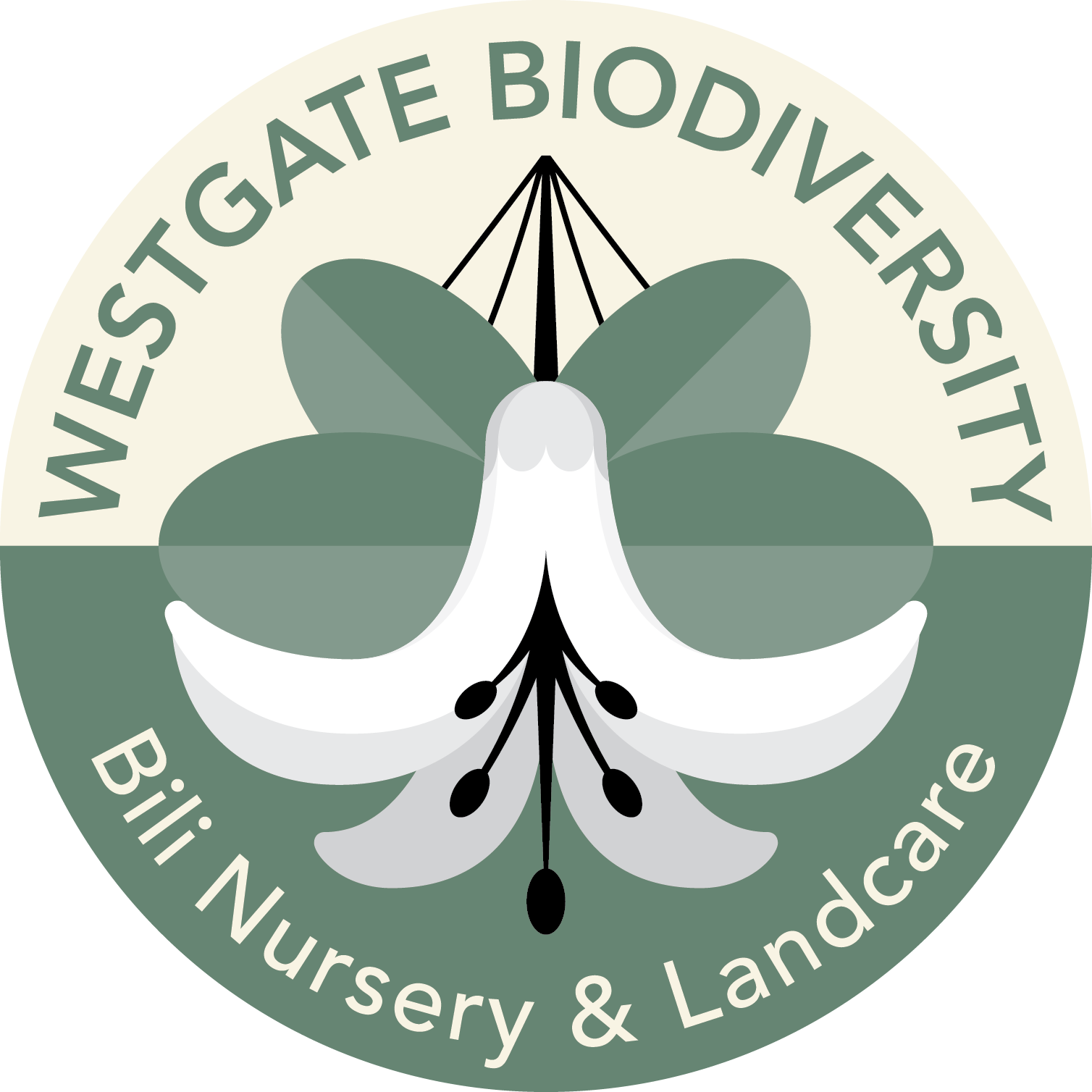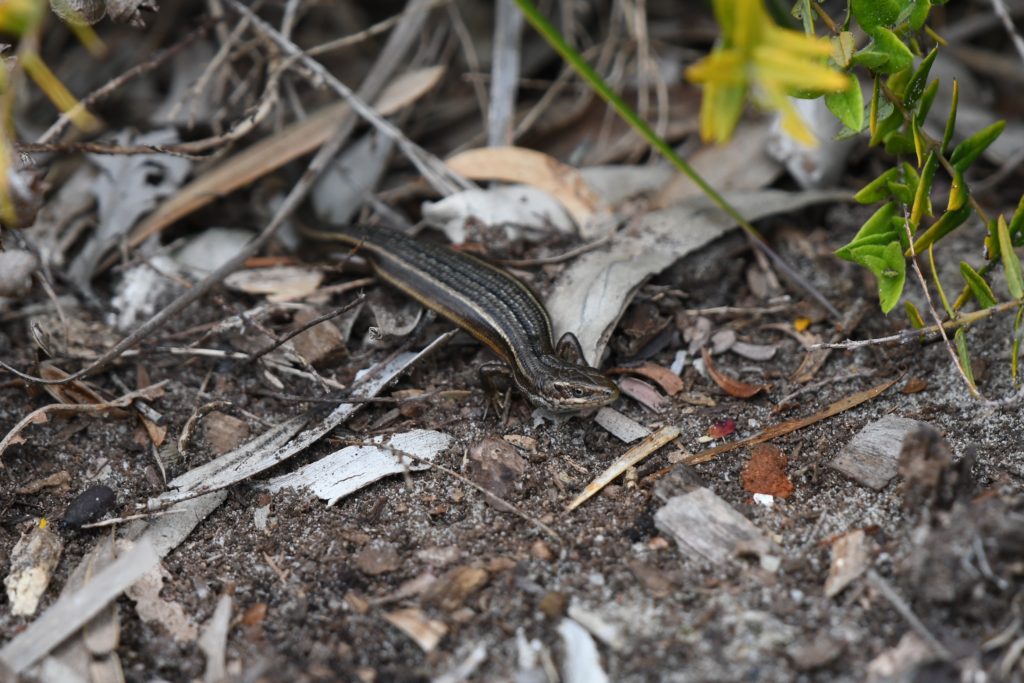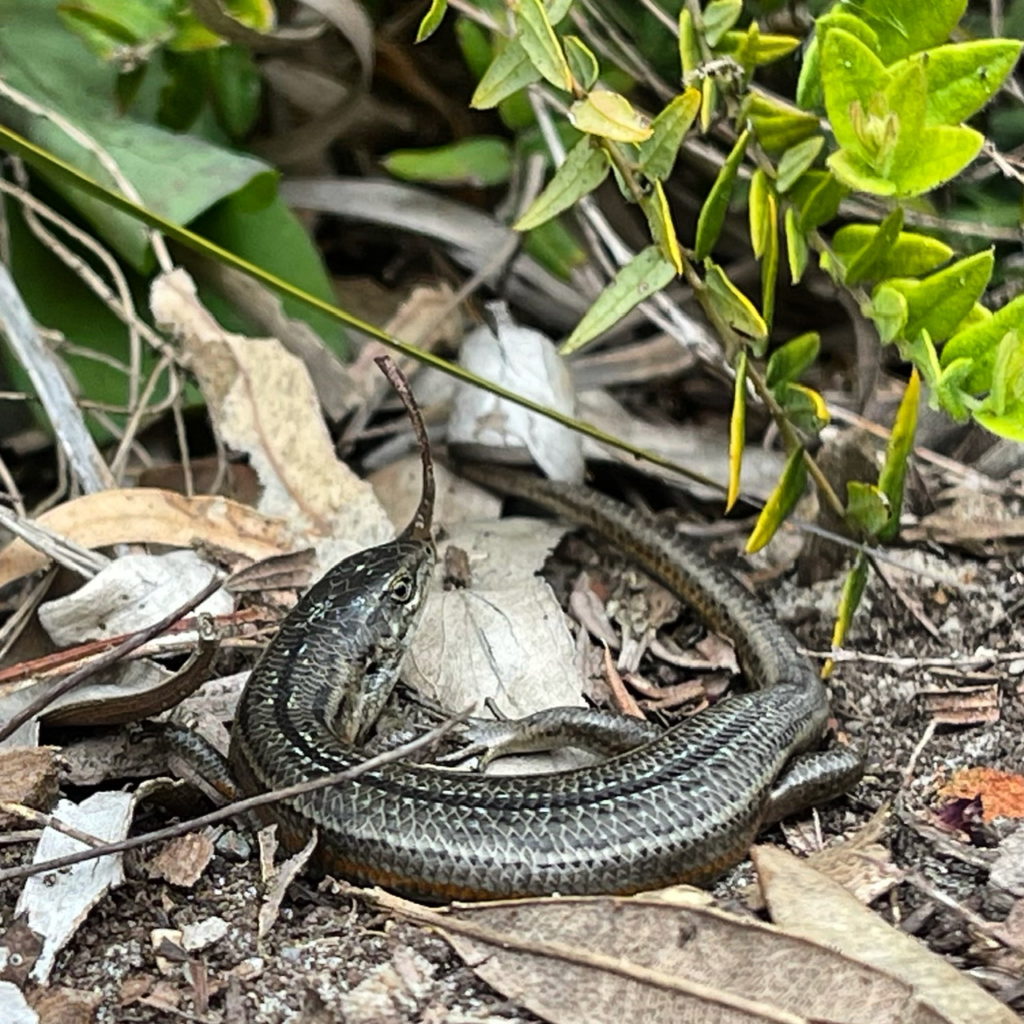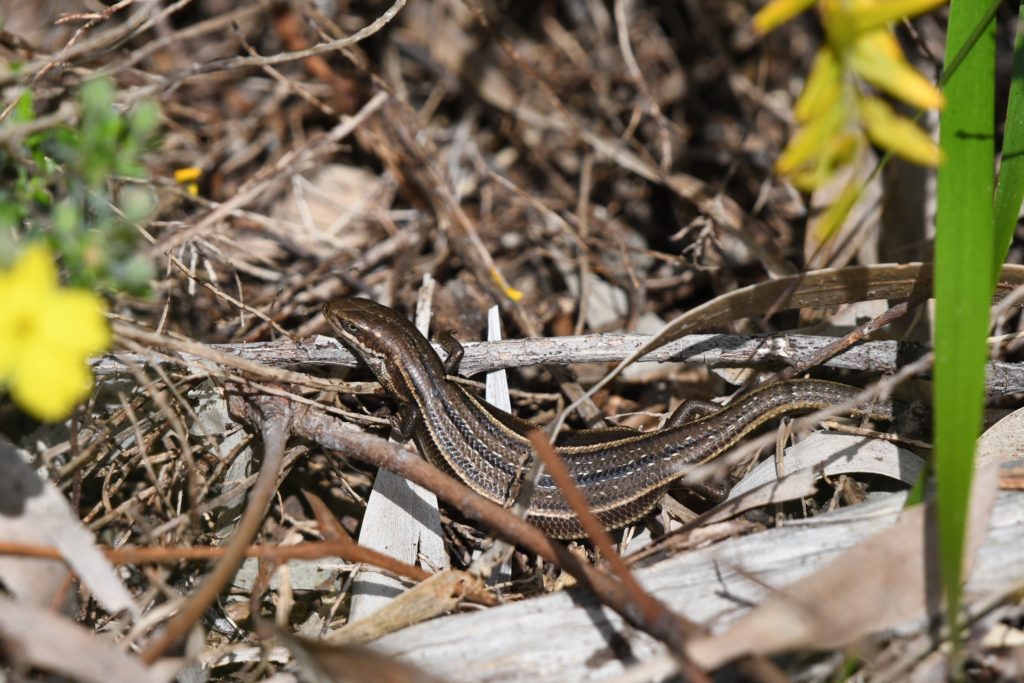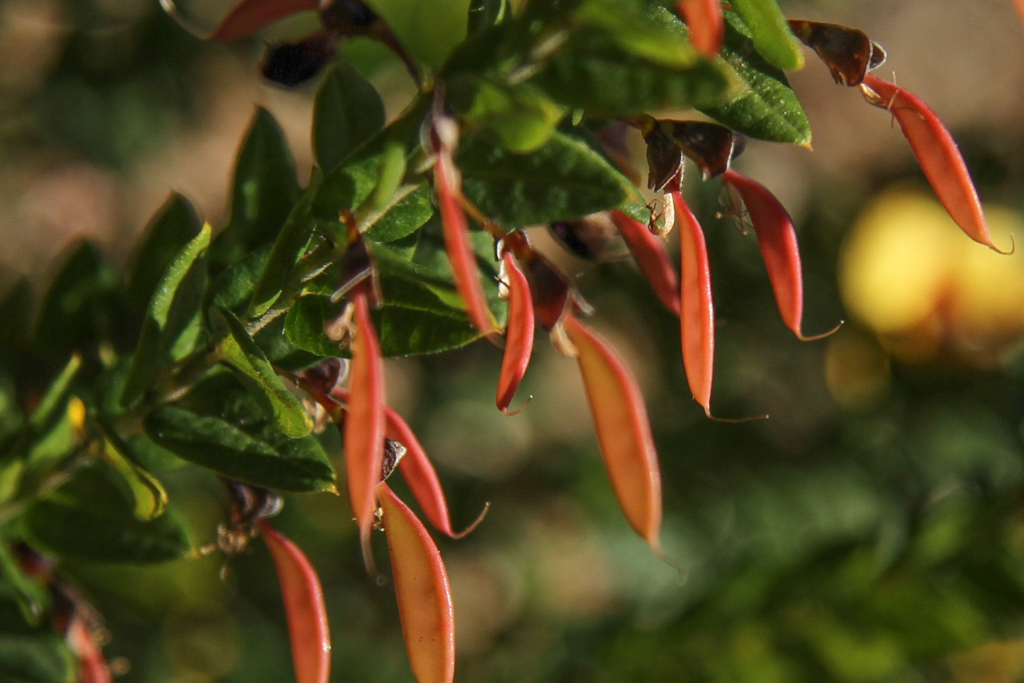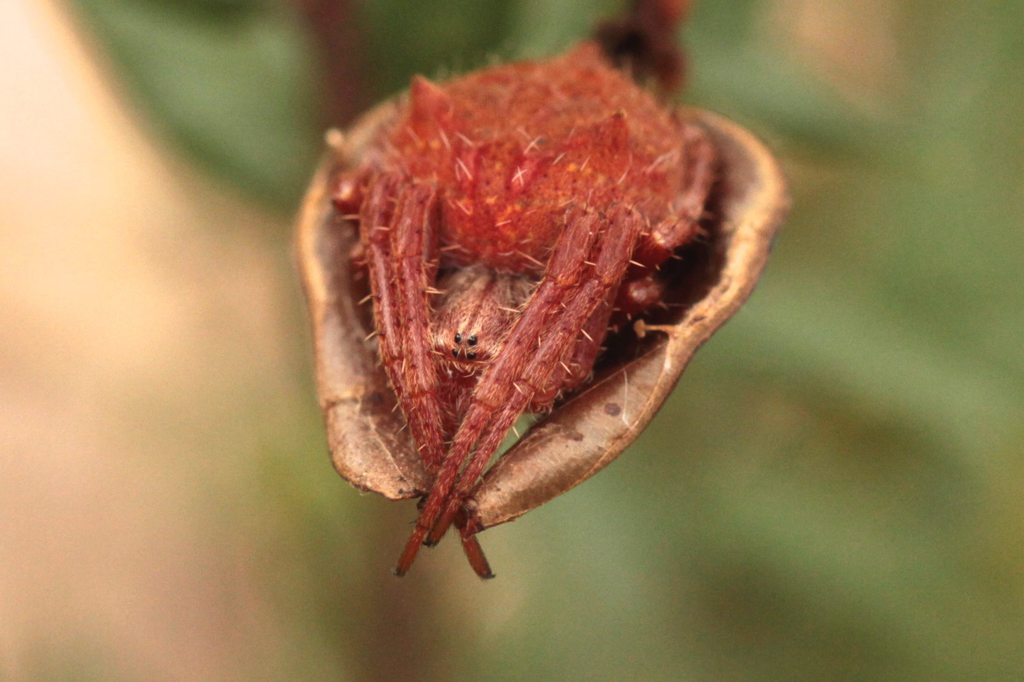Garden gift ideas for Christmas
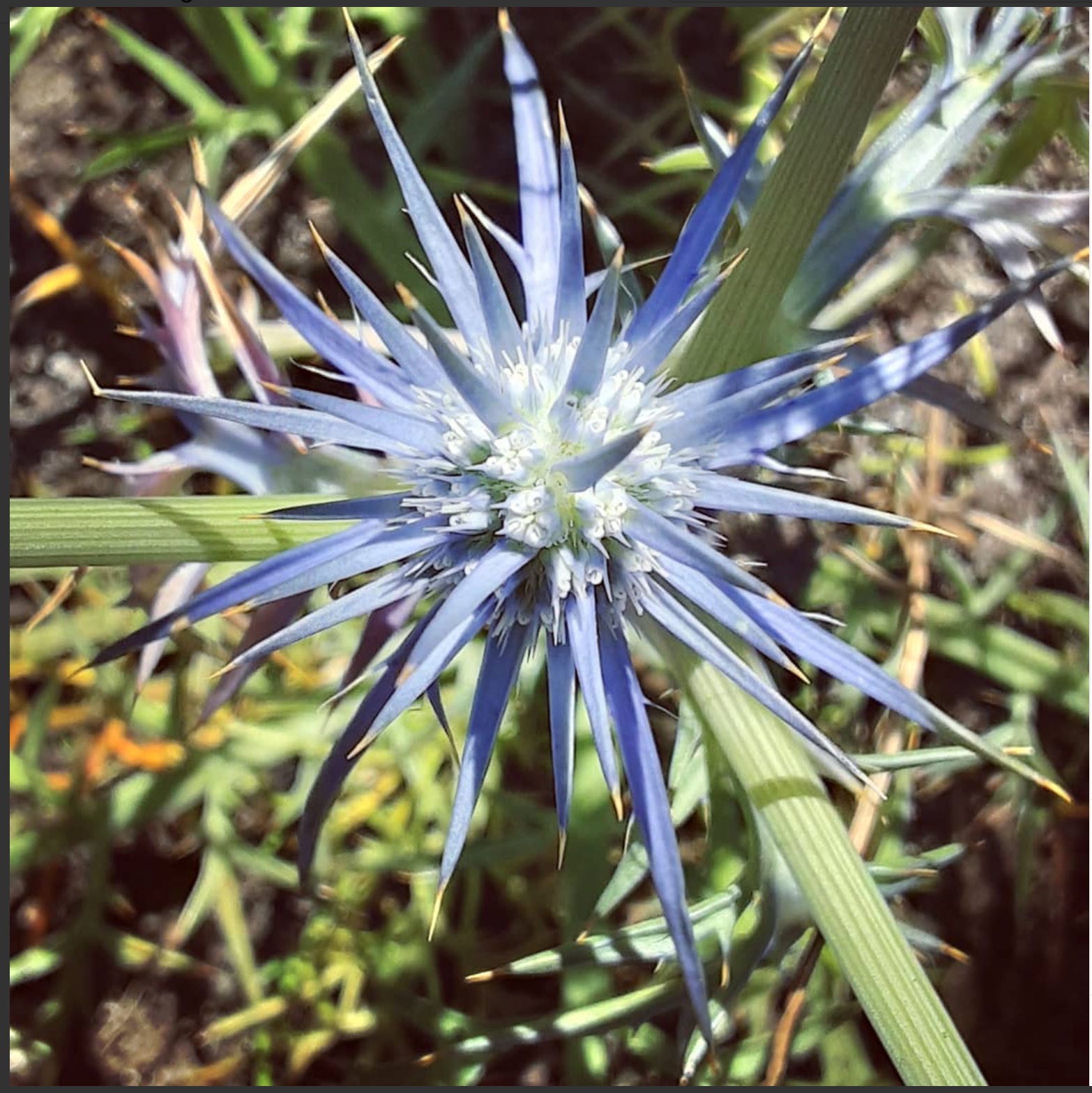

The tree that just keeps giving
Black she-oak (allocasuarina littoralis) is available at the Bili Nursery in mantelpiece- or shelf-friendly sizes, perfect for a splash of seasonal greenery and decoration.
And once the celebrations are over, plant a sapling to mature into a very controllable tree.
Black she-oaks can grow to more than 8 metres in height but can also be trimmed or lopped to suit medium-sized urban backyards.
Virtually indestructible, black she-oaks also offer other benefits.
“What they are in habitat terms is they are the number one food for black cockatoos,” says Bili Nursery manager Nic Brinkley
Fast-growing bird habitat
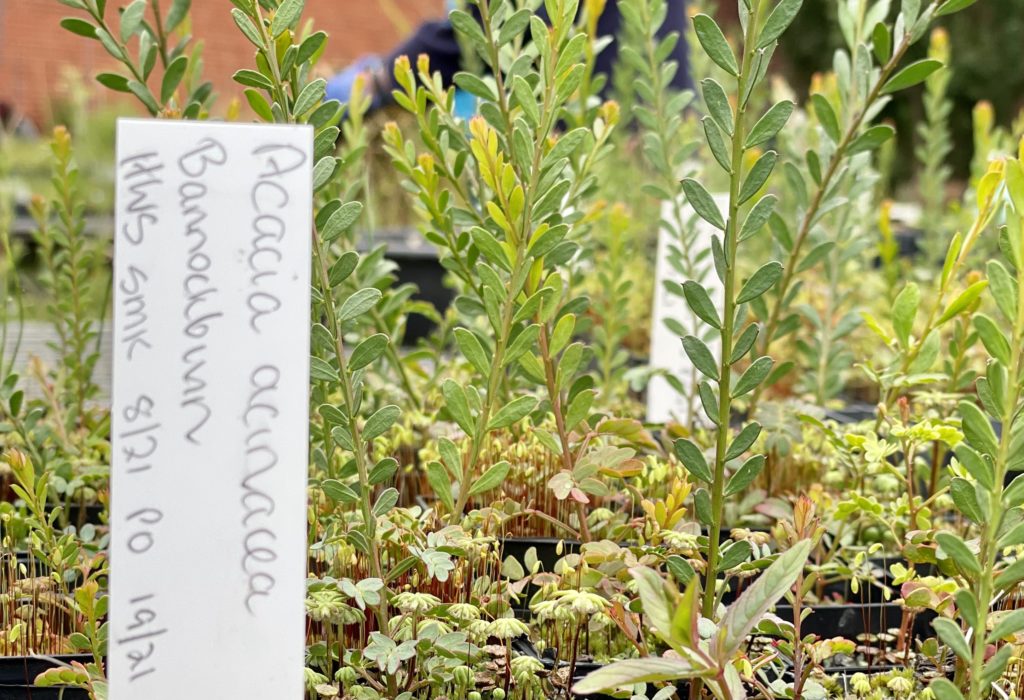
Acacia acinacea is also known as the gold dust wattle.
This native of south-eastern Australia makes a fast-growing hedge and wonderful small-bird habitat.
Gold dust wattle blooms usually between July and November, adding a dash of bright colour to a winter garden.
A native for a cottage garden
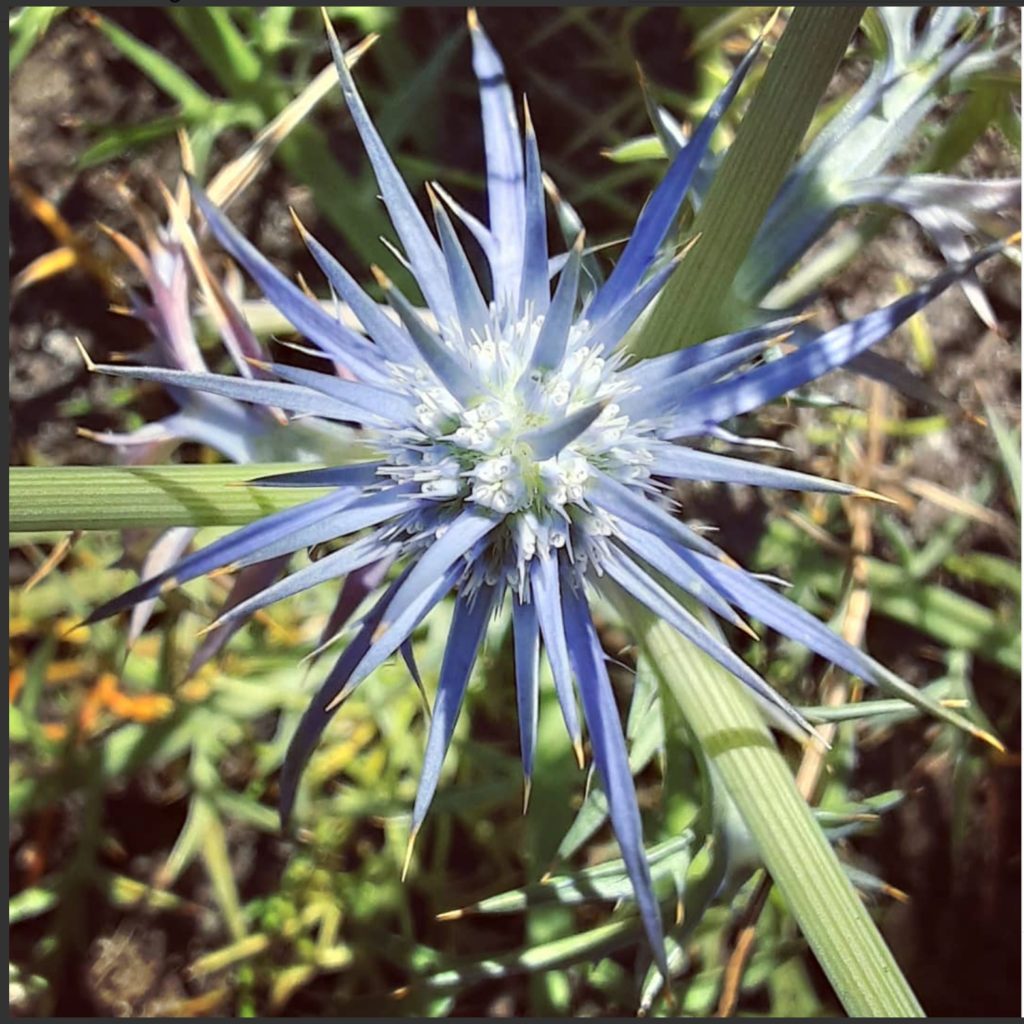
If you’re after an informal indigenous plant that would not look out of place in a traditional European-style garden, try the blue devil (eryngium ovinum).
Often thought of as an Edwardian-era plant, blue devils make excellent garden drifts.
Alternatively, use blue devils for a random-style colour effect in informal cottage gardens.
Weed fightback
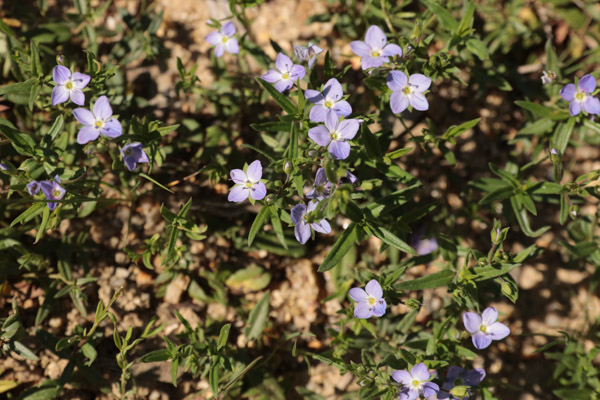
Weeds are now a major problem at Westgate Park and the focus of our volunteer efforts there. However, we have discovered that many of our indigenous species are holding their own against the invasion.
Dense shrubs like Pomaderris paniculosa – Coast Pomaderris and Dodonaea Viscosa – Wedge-leaf Hop-bush are effective at keeping weeds at bay but, surprisingly, so are some of our groundcovers and sprawling herbs.
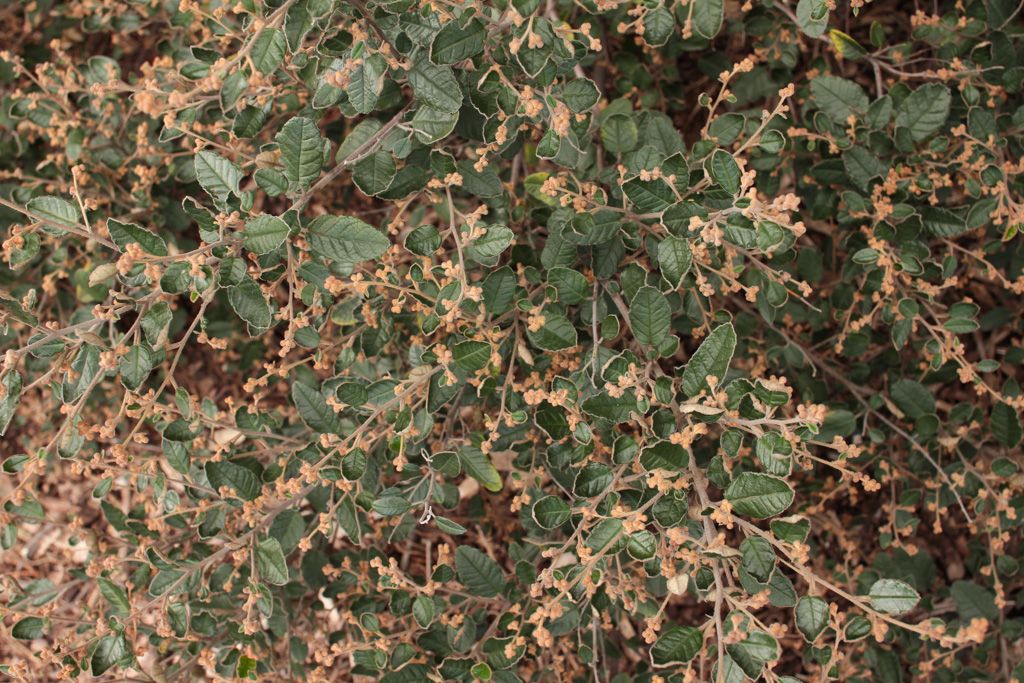
Pomaderris paniculosa – Coast Pomaderris 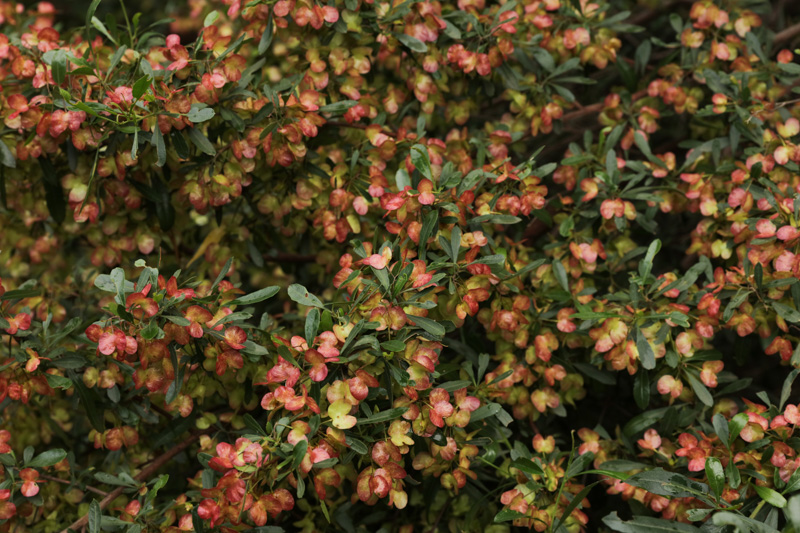
Dodonaea viscosa – Wedge-leaf Hop-bush 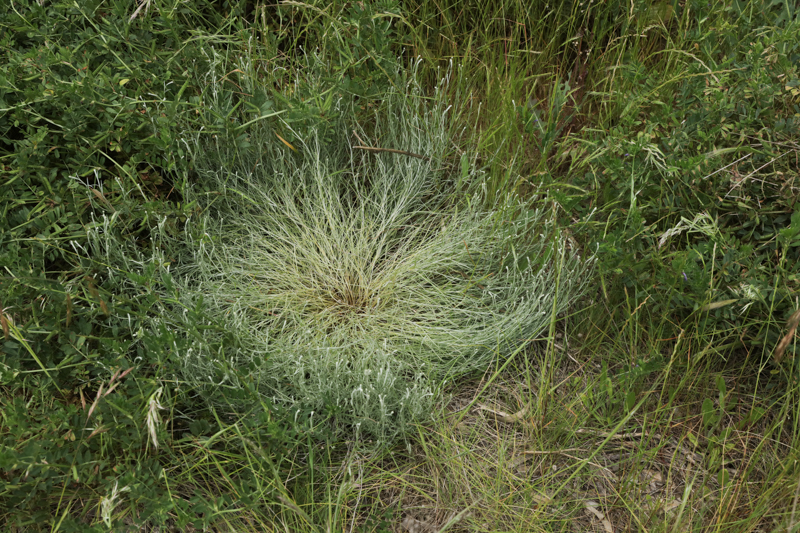
Calocephalus lacteus – Milky Beauty-heads is surrounded by Vetch – one of the most difficult weeds to control. 
Veronica gracilis – Slender speedwell is a tough little trailing herb with woody roots that apparently discourage weeds. 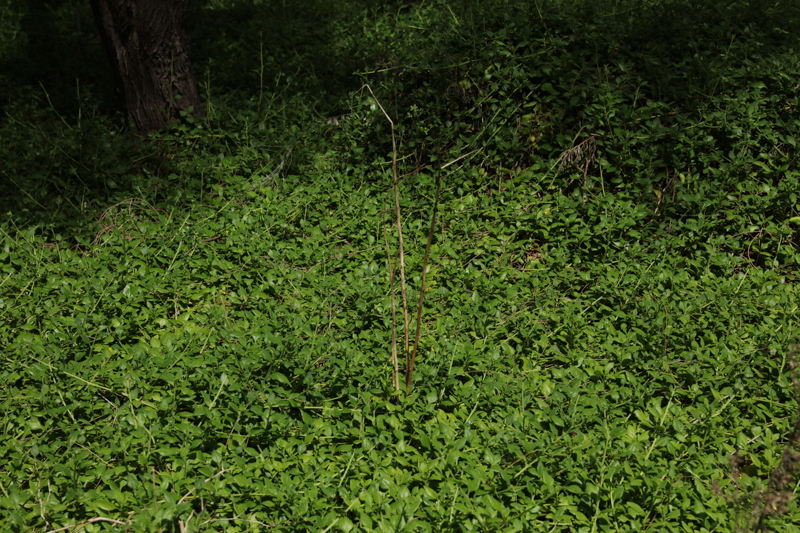
Tetragonia implexicoma – Bower Spinach forms dense impenetrable mats 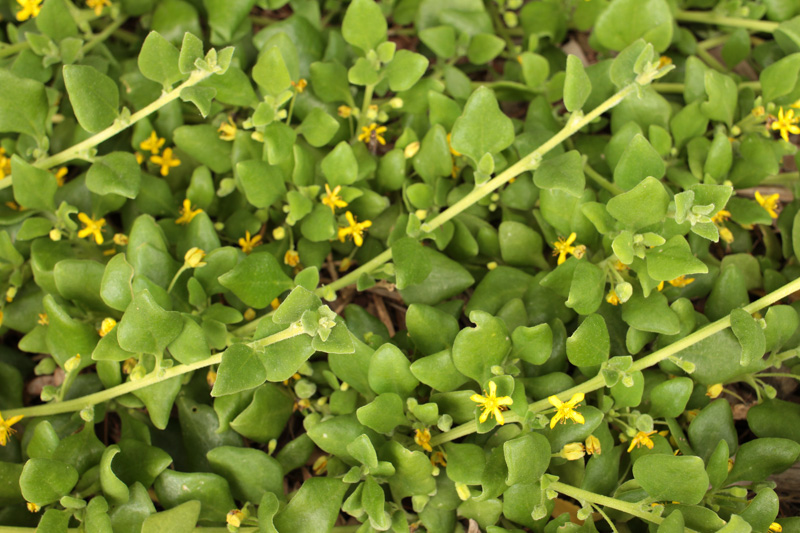
It’s young leaves are edible but must be steamed or boiled to remove the oxalic acid. 
The tiny Goodenia geniculata – Bent Goodenia has not only survived but flowered for the first time and spread widely . 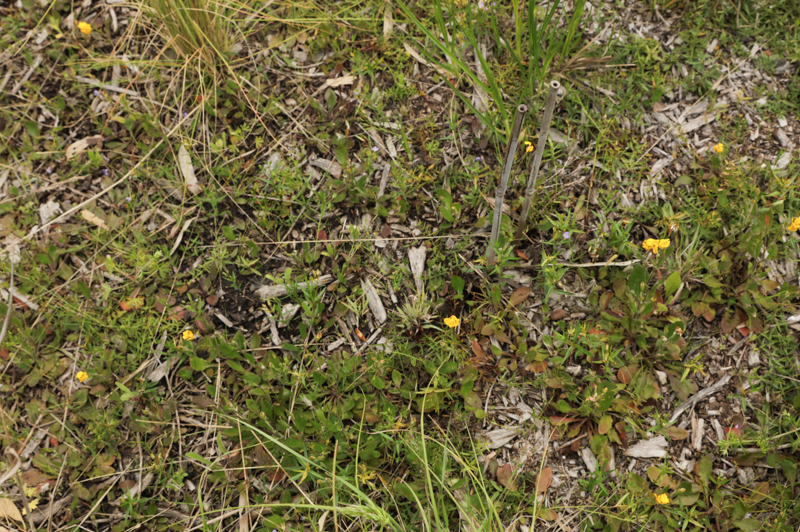
It’s also keeping weeds at bay in the Southern Wetlands where they are rampant.
Parts of the park with mature vegetation are largely weed-free especially where the soil is well covered by plants and leaf litter.
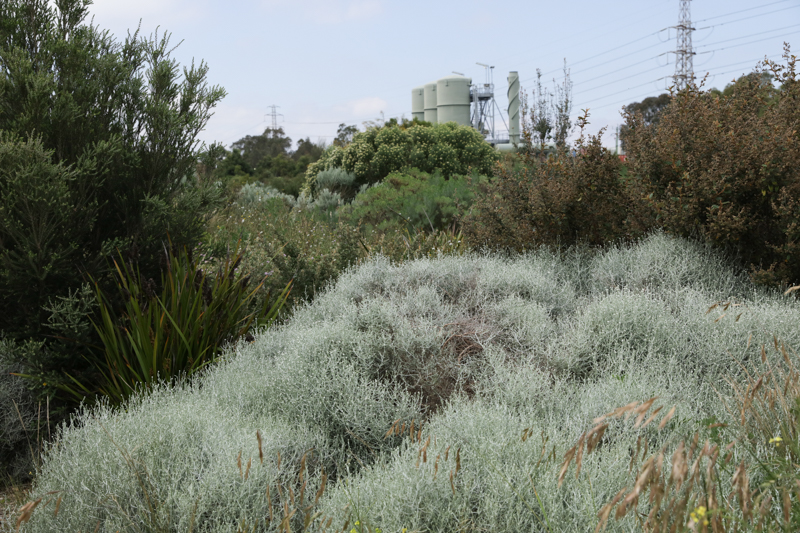
Leucophyta brownii – Cushion Bush in the foreground 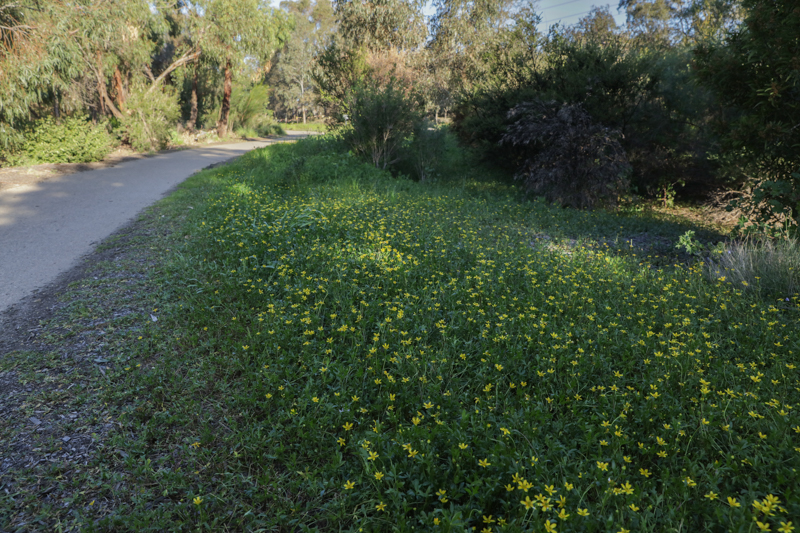
Bed of Ranunculus papulentus – Large River Buttercup in the River section (A now very uncommon species in Victoria) 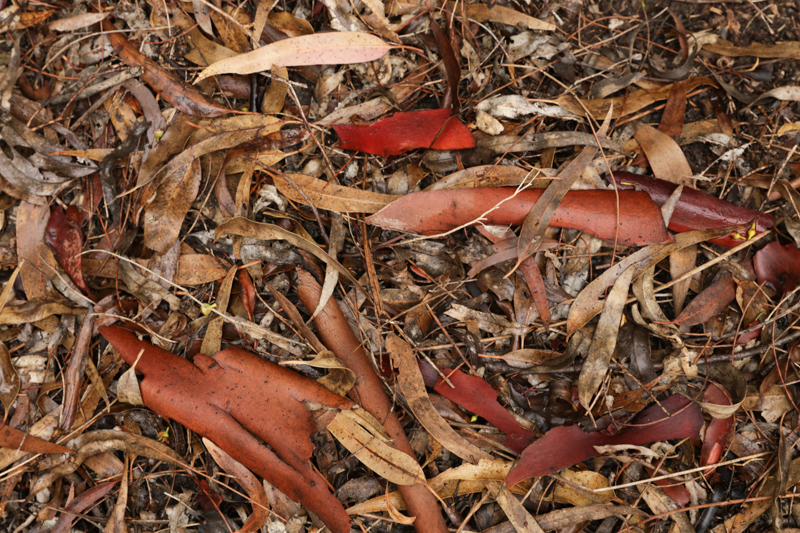
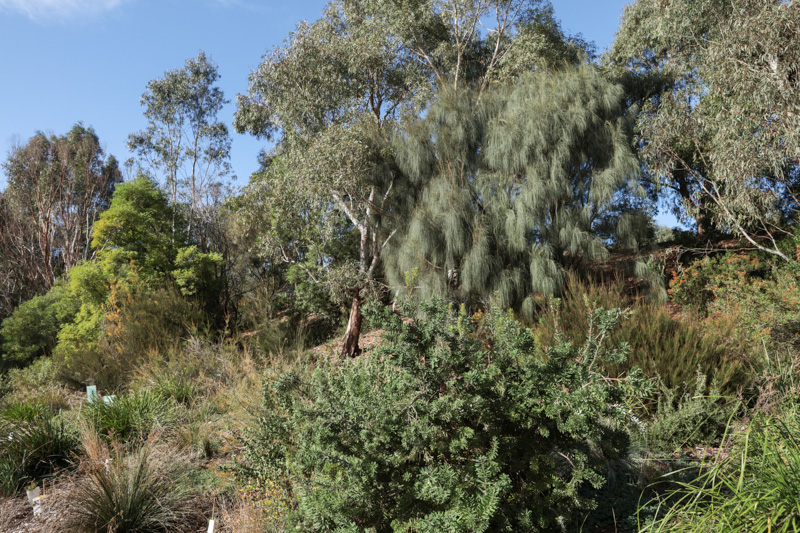
1st Heath
Bili Nursery reopens to public
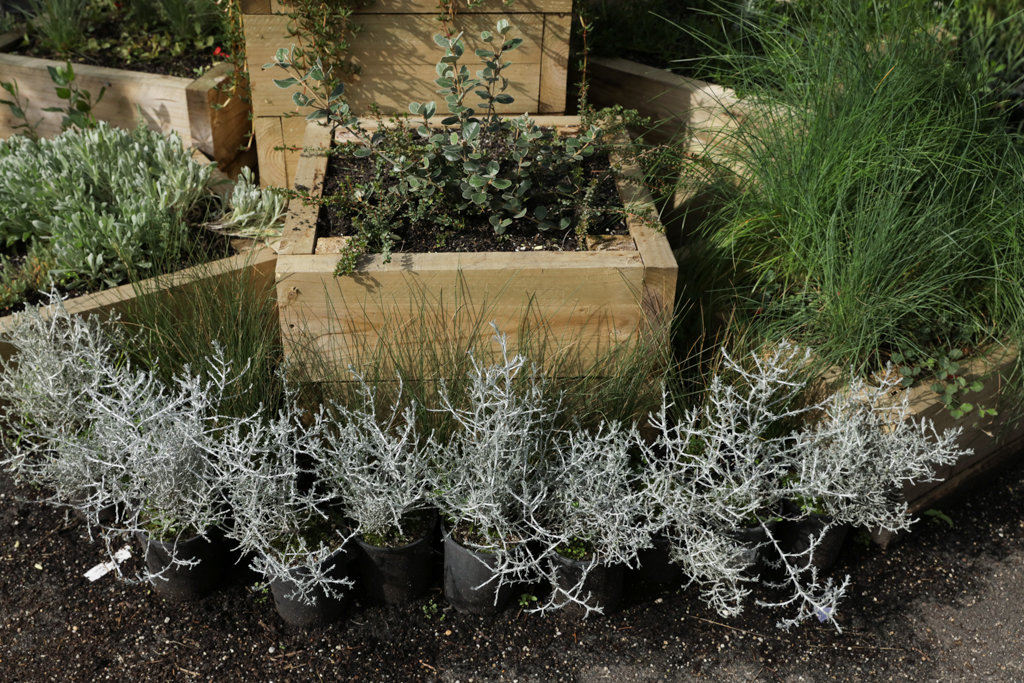
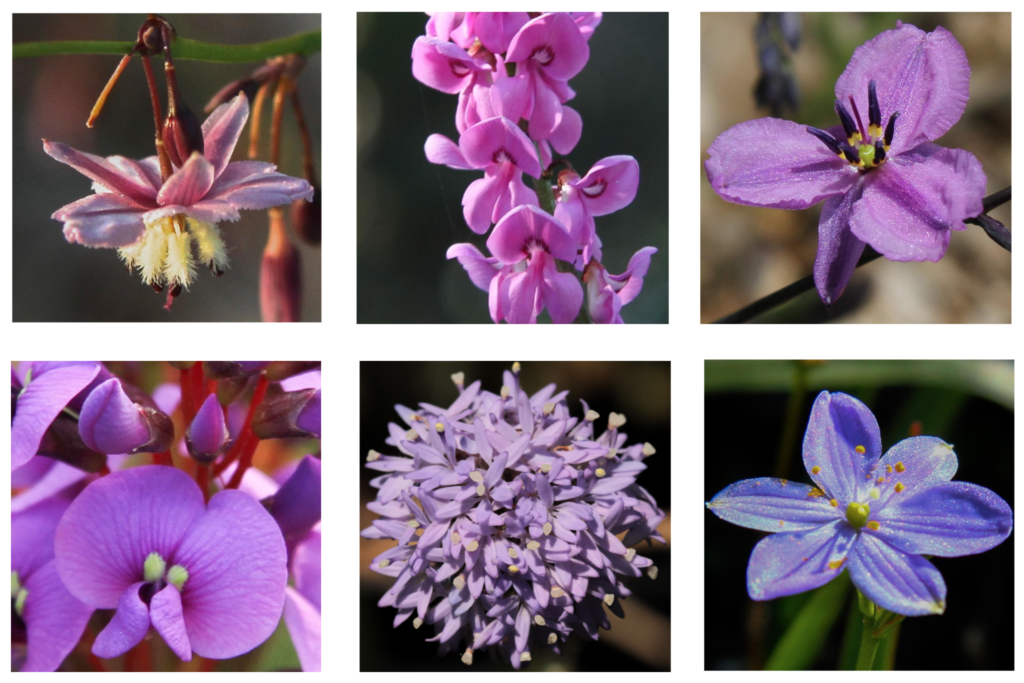
We’re back from 9 am Friday 20th October, and we’re having a bit of a sale to welcome customers to our outdoor home in Williamstown Road.
Now that COVID restrictions have been eased, Westgate Biodiversity’s Bili Nursery will once again be able to sell a wide range of indigenous flora to the general public.
The price of tubes has been dropped to $3 each, down from $3.50, and 14cm pots will be on sale at $15 for two, compared with the usual retail price of $9 each.
But there is limited availability, so it’s probably best to get down sooner rather than later.
Opening hours are:
Monday-Friday 9 am to 4 pm
Saturday 10 am to 3 pm
Bird Survey 4 October
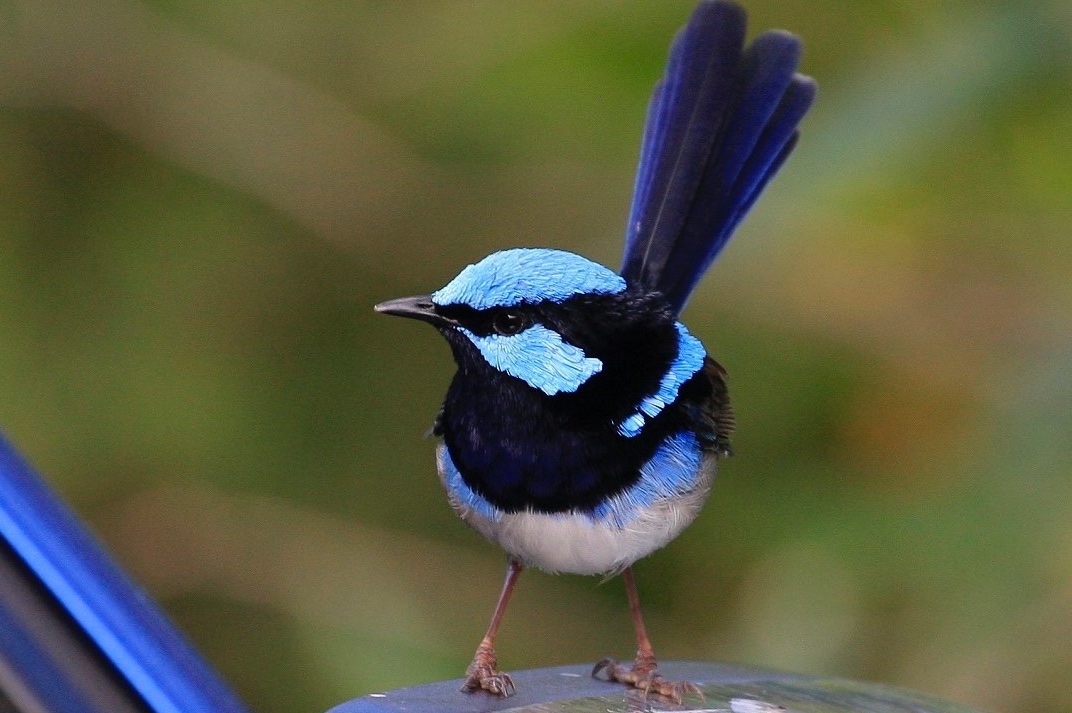
Just in time for the result of the highly competitive Guardian Australia Bird Of The Year poll, comes our October survey featuring not only the deserved winner, the superb fairywren, but also another top-5 finisher, the Galah.
The superb fairywren has become one of the most common birds in Westgate Park, with 54 sightings including 30 blue.
The Galah clocked 3 sightings, making up a total of 63 species spotted in the park.
Observations
The water in both major lakes was at high levels and noticeably clearer than usual – could this be due to the considerable growth resulting from recent excellent rains providing better than usual coverage of the soil?
A brushtail possum has returned to roost in a tree close to the barbecue shelter. The perch, located where the tree was snapped off in a storm, is very exposed although recent epicormic shoots have obscured the spot somewhat.
Not for the first time, a pair of hobby hobbies has nested at the top of the crane at the Wharf Road CFMEU training centre.
Bird Survey 6 September
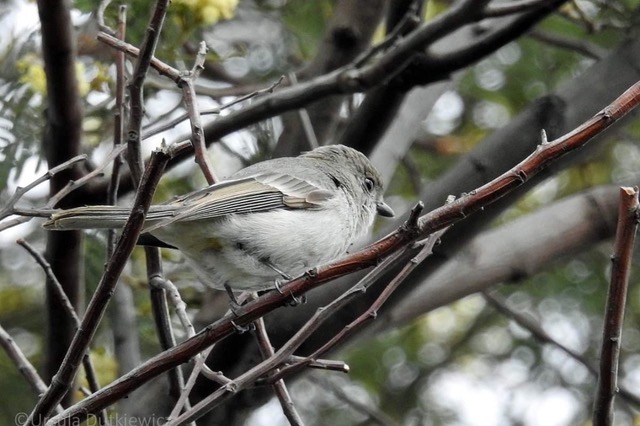
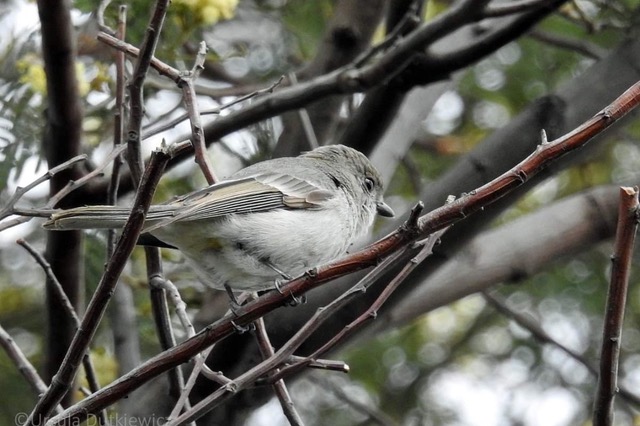
Following regular and substantial rain both major lakes are at high levels not seen for some time.
This means several species of water birds have dispersed to some of the many other wetlands in the region.
Many passerine species are flourishing and breeding, and since our survey a female golden whistler has been photographed in the park.
Yellow-tailed black cockatoos have been frequently observed.
The survey team also saw a brush-tailed possum with a young offspring high in a red gum near the Friends compound.
It is gratifying to see considerable increases in the number of welcome swallows soaring across the park
The number of visitors to the Park indicates it remains a very important outlet for nearby residents and workers during the Covid era.
Endangered Tussock Skink
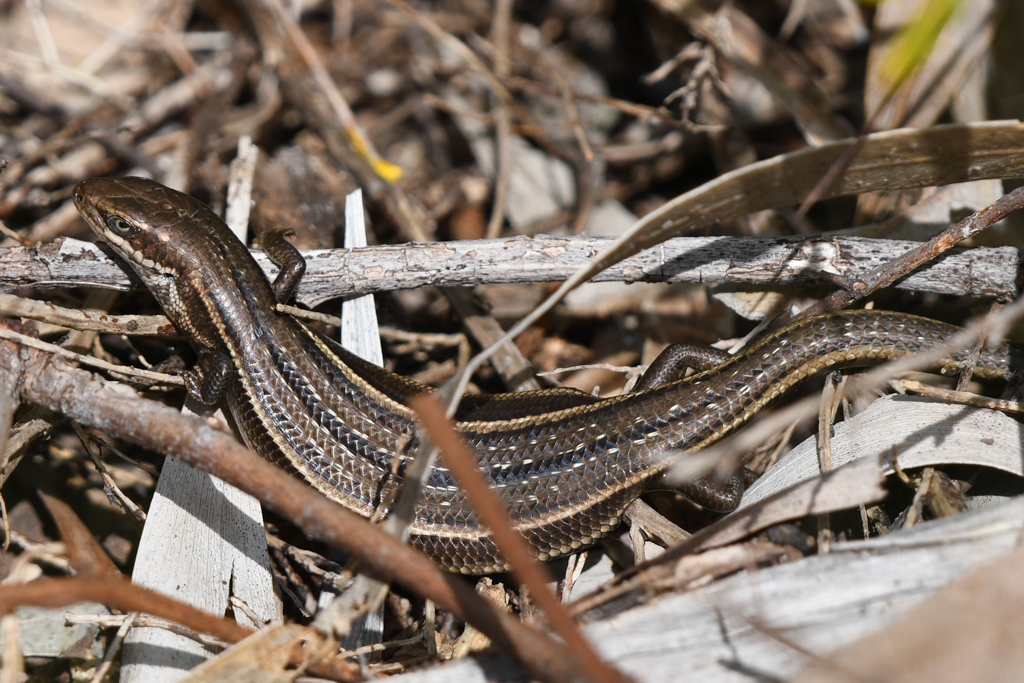
This week, for Threatened Species Day, we are celebrating the discovery in our 2nd heath of the beautiful Southern Grass Tussock Skink, Pseudemoia pagenstecheri, which is listed as Endangered under the Victorian Flora and Fauna Guarantee Act, near threatened in SA and Endangered in Tas.
The Tussock Skink grows to 62mm in length, is a carnivore, and an opportunistic arthropod feeder including spiders, crickets, larvae and adult moths and beetles .
Daniel Gilmore, a herpetologist from Biosis kindly provided us with these photos, taken under the lovely pea-flower Bossiaea cinerea. He has been keeping an eye on these beautiful lizards and says they have been in the park for some time.
Notes on the natural history of the Tussock Skink say they are active in all months of the year when conditions are favorable and they use stones and grass tussocks as refuges and basking sites. Males develop a red stripe down the side of the body.
They tend to occur singly, both when active and sheltering. They bear live young – a clutch of up to 11 – in December and January, are preyed upon by snakes and tend to be shy and elusive.
The Tussock Skink is more common in the basalt plains grasslands of the north and west of Melbourne so we are very fortunate to have it in Westgate Park.
Peas, fabulous peas
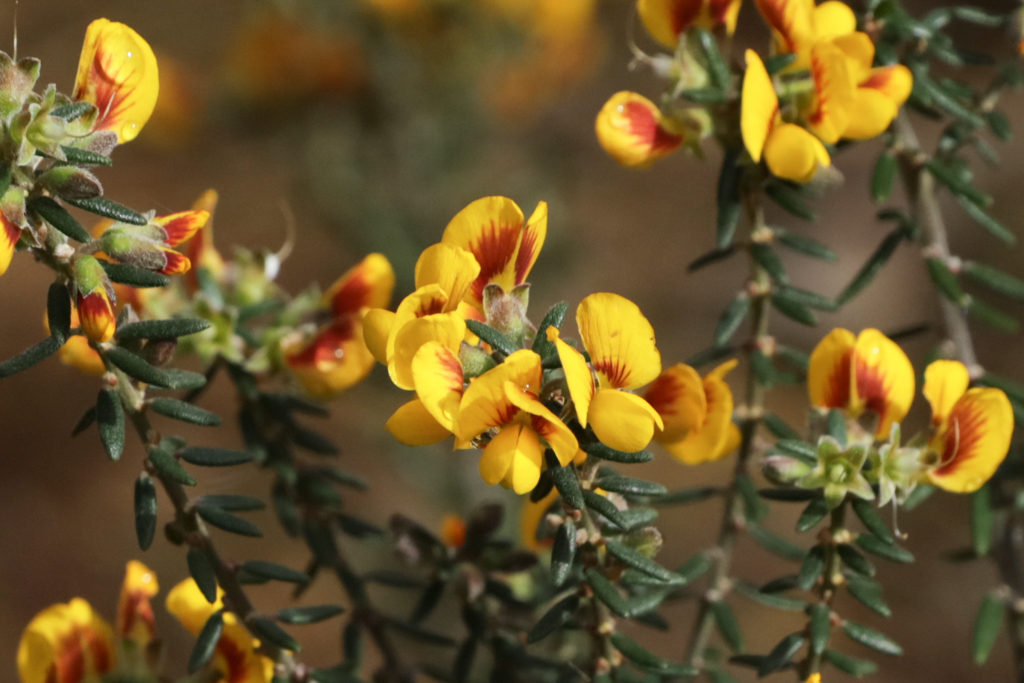
August and September are the best times to see peas in the Park. Dillwynia, Aotus, Eutaxia, Davesia and Bossiaea species put on a dazzling show of yellow and red pea flowers. You will find them in our heathy areas of the Park.
These medium to small shrubs are great habitat for birds.
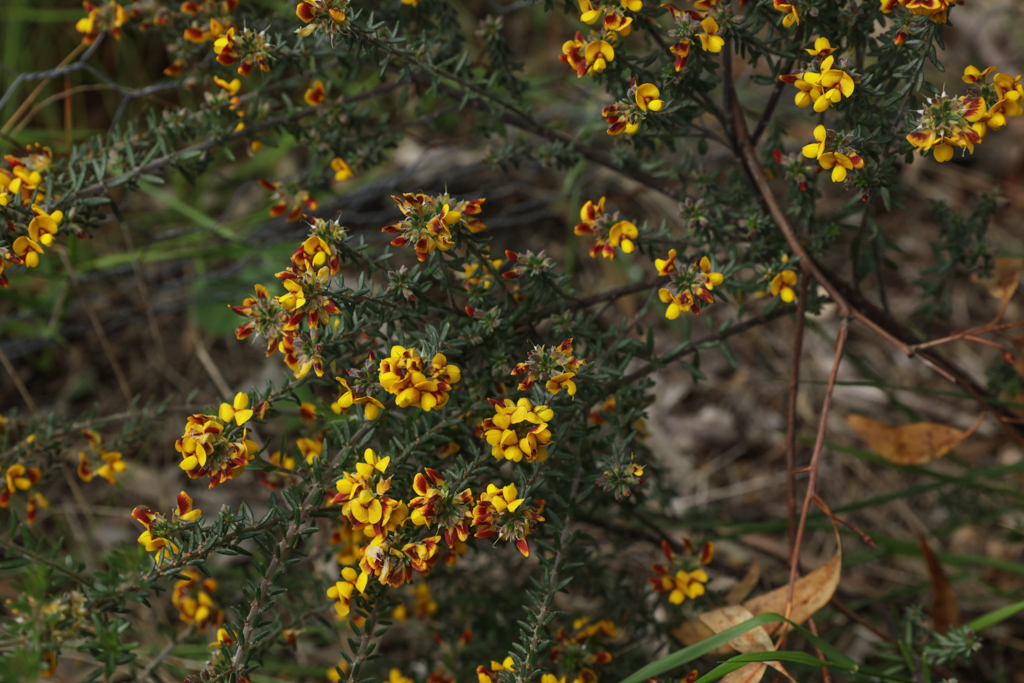
Aotus ericoides – Common Aotus 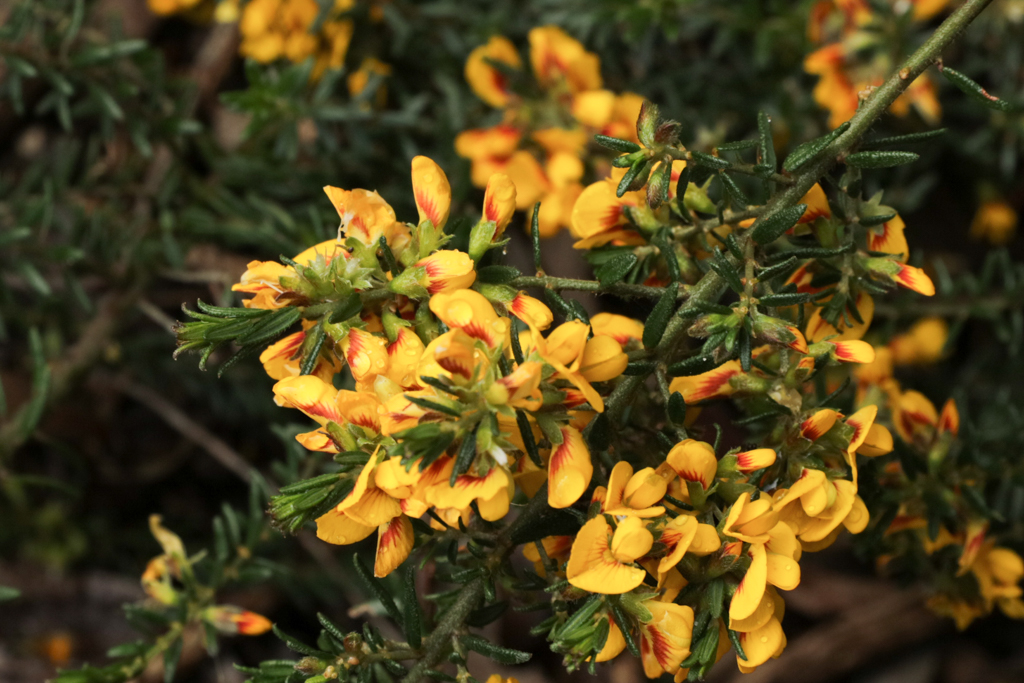
Aotus ericoides – Common Aotus 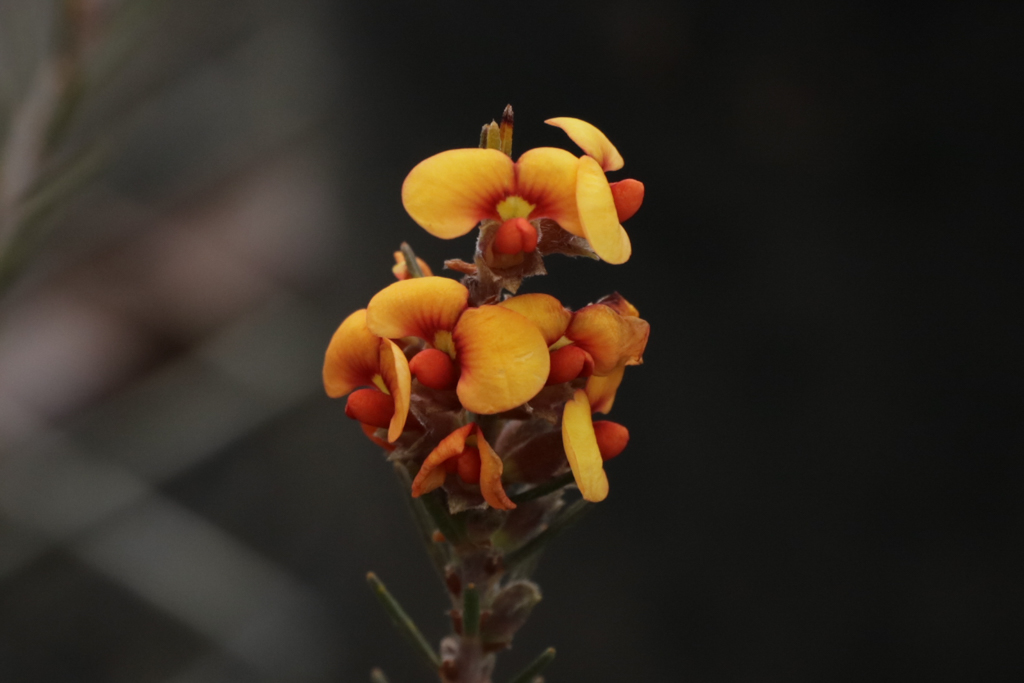
Dillwynia sericea – Showy Parrot-pea 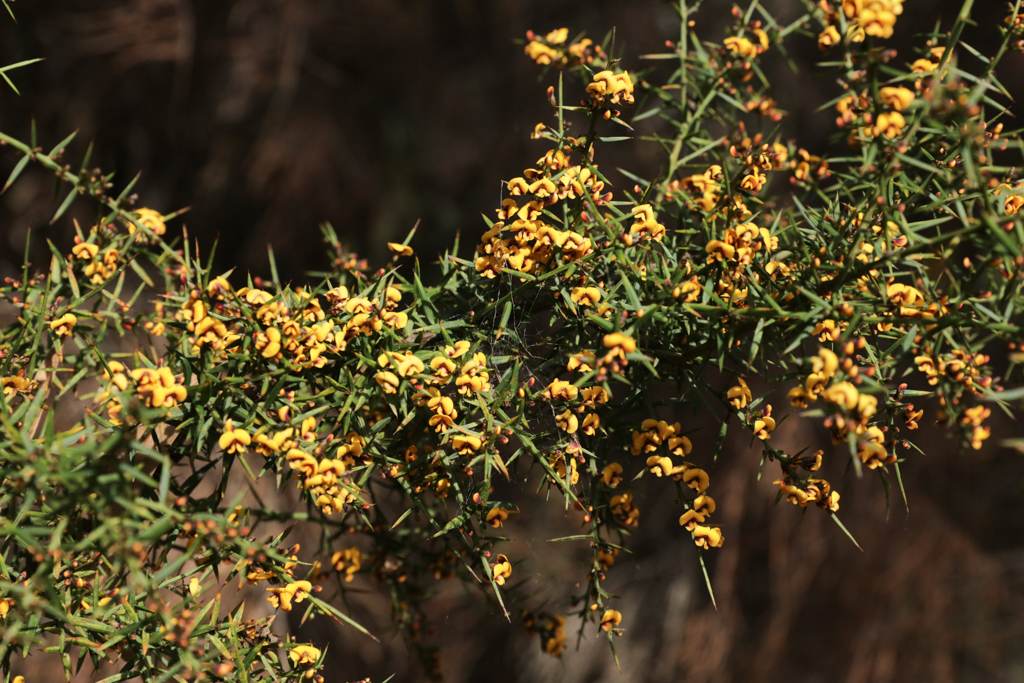
Davesia ulicifolia ssp. ulicifolia 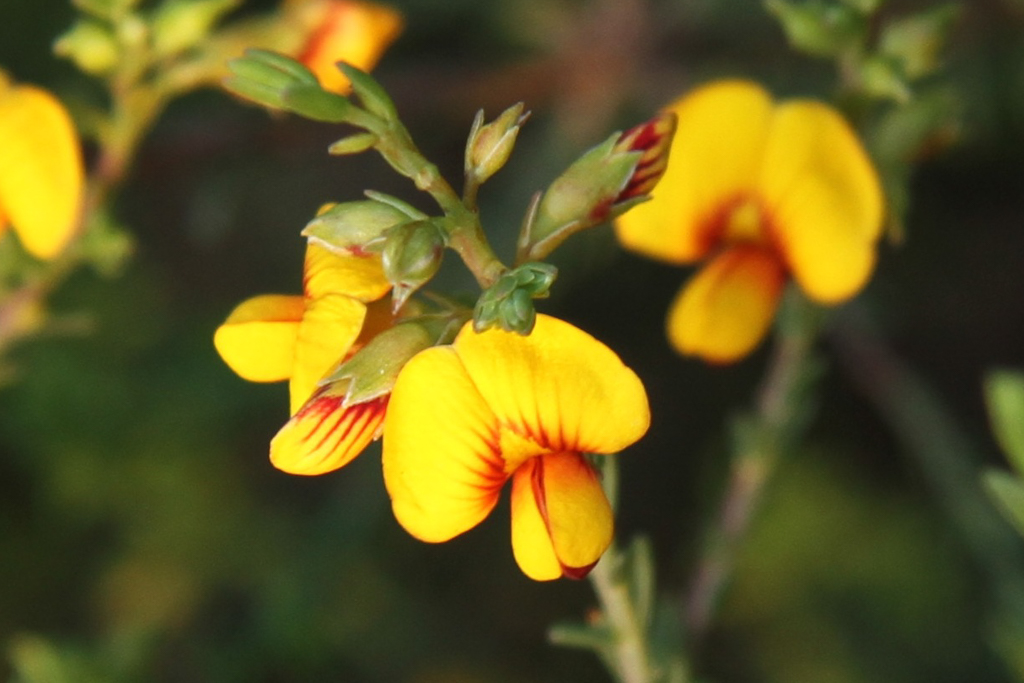
Eutaxia microphylla var. diffusa – Spreading Eutaxia 
Eutaxia microphylla var. diffusa – Spreading Eutaxia 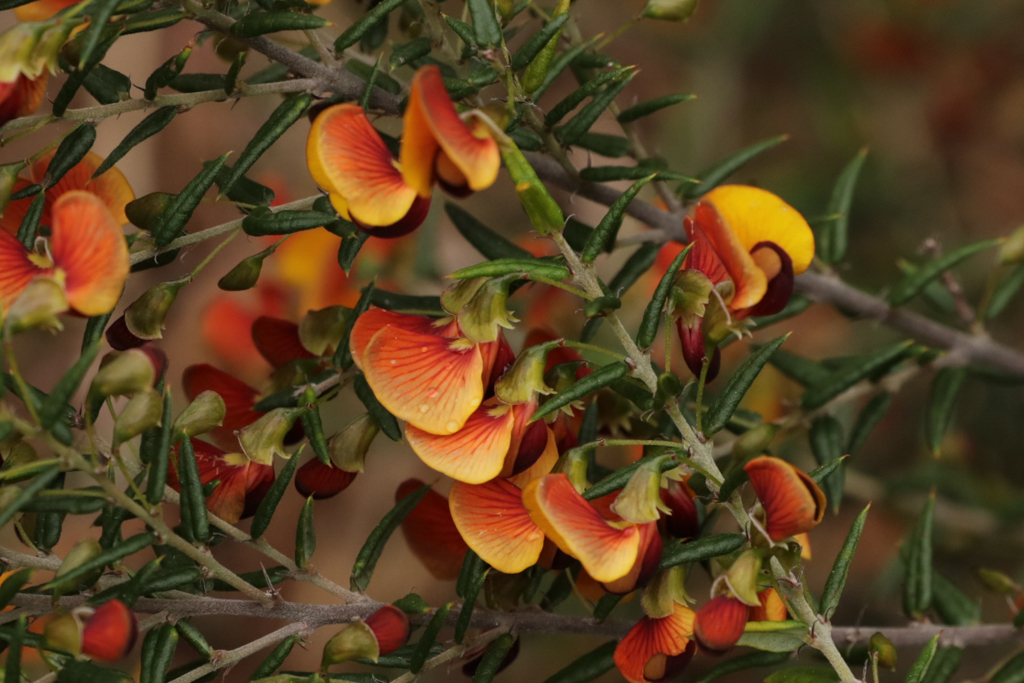
Bossiaea cinerea – Showy Bossiaea 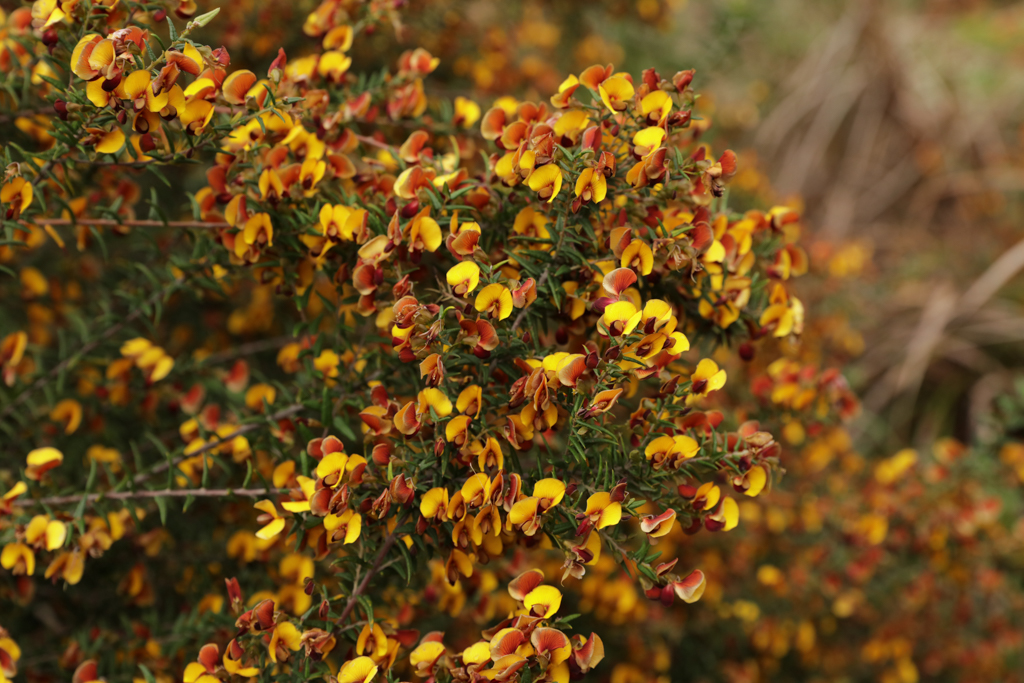
Bossiaea cinerea – Showy Bossiaea
The seed pods of Bossiaea cinerea are almost as decorative as the flowers and once the seeds are expelled, make good homes for the tiny Orb Weaving Spider.
Melbourne Pollinator Corridor
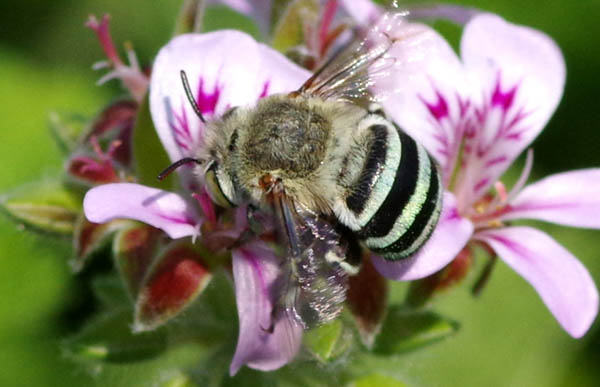

Native Alkaline or Sweat Bee 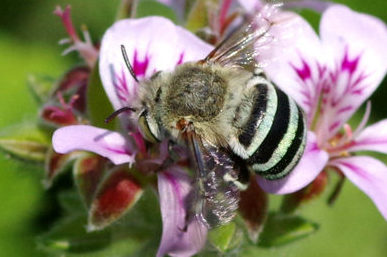
Amegilla sp. – Blue-banded Bee, photo Luis Mata
Westgate Park is set to play a key part in an ambitious new project to boost indigenous insect life and pollination.
Emma Cutting is a self-described “amateur plantswoman” who has recently launched an exciting community-led initiative to establish the Melbourne Pollinator Corridor.
The idea is to create a connected 8km-long wildlife corridor to encourage native bees and other native pollinators. The route will start at Westgate Park and end at the Royal Botanic Gardens.
Emma recently told the ABC’s Blueprint for Living program: “The way it’s going to happen is 200 gardens on the street, so nature strips, created at most 50 metres apart.” The short gaps will still allow cross pollination along the entire route.
Westgate Bioversity: Bili Nursery Landcare has already helped another of Emma’s brainwaves, The Heart Gardening Project, with advice from Westgate Bioversity manager Nic Brinkley and plants from the Bili Nursery.
To hear more about Emma’s Melbourne Pollinator Corridor, take a listen to a recent chat with director of the Royal Botanic Gardens of Victoria Tim Entwisle.
Port of Melbourne on board
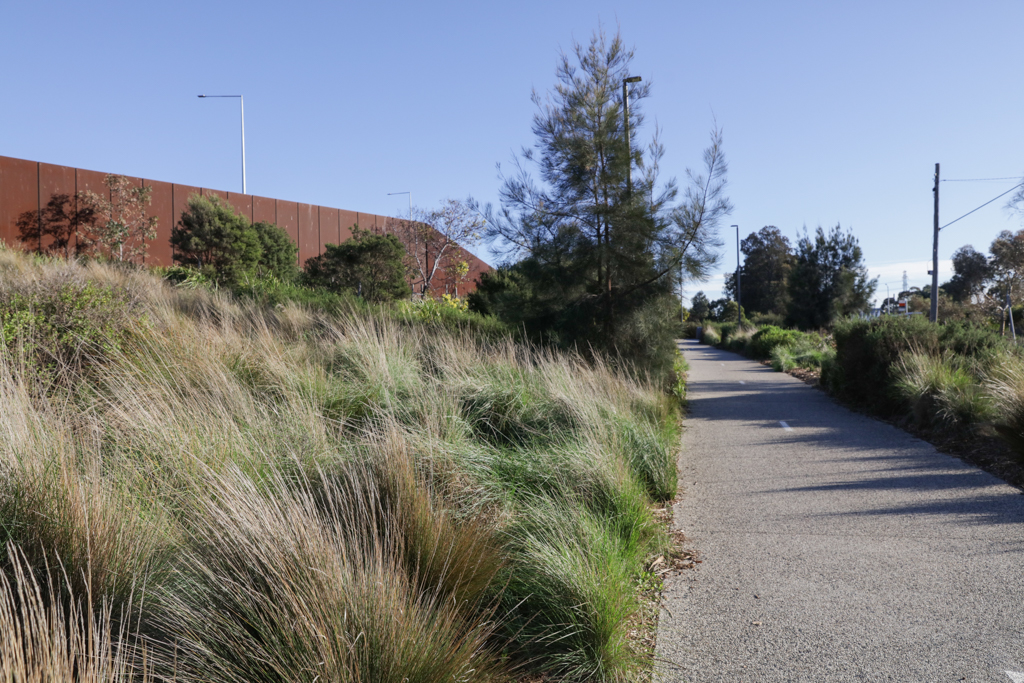
Bili Nursery recently grew and supplied 8000 plants for the Port of Melbourne to fill in gaps in the Todd Rd linear landscape.
Port of Melbourne has now planted, mulched and weeded, and the landscape is looking much better for the tlc.
Here’s their tweet announcing 6000 plants already in the ground.
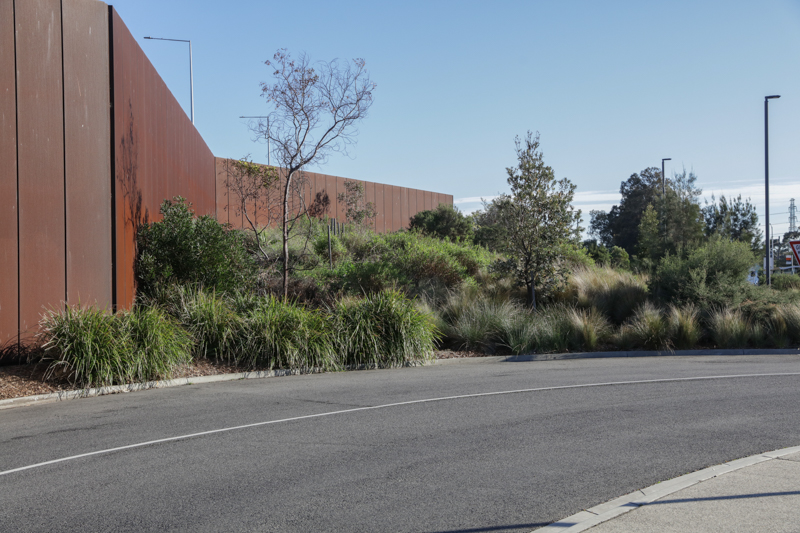

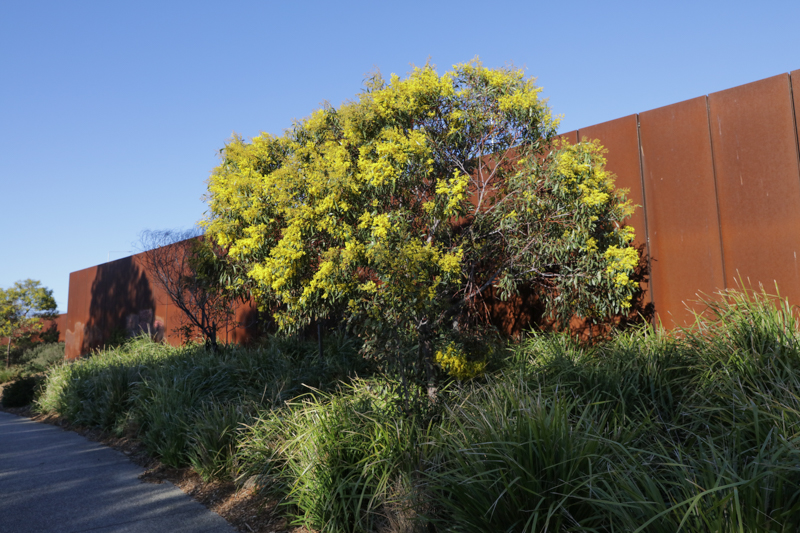
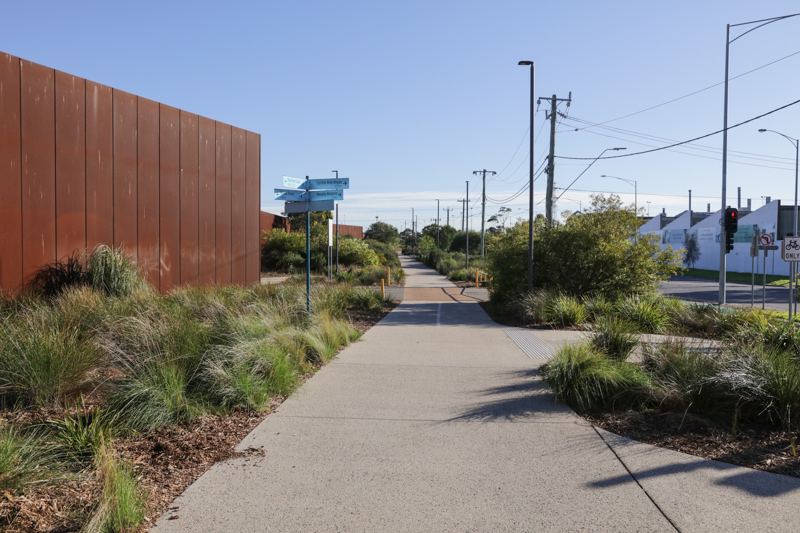
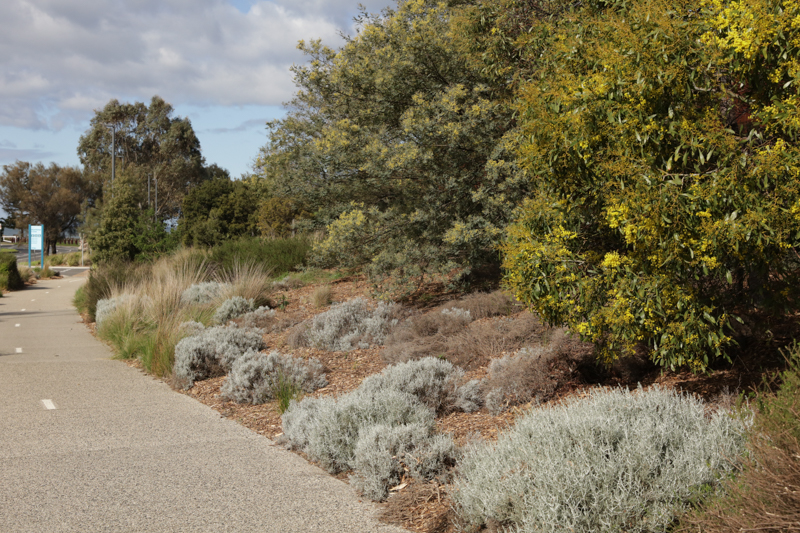
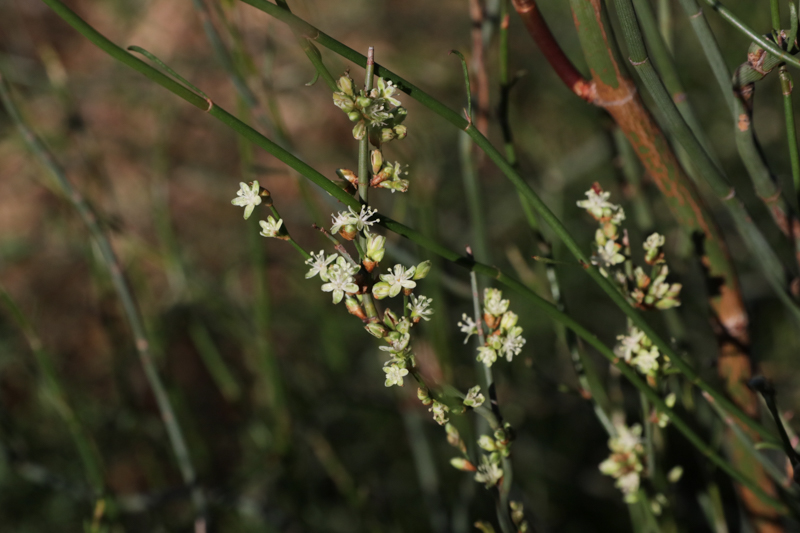
Muehlenbeckia florenta – Tangled Lignum
This important community asset was created as part of the Port Capacity Project and is a vital biodiversity link between Westgate Park, the Webb Dock east path and the Sandridge foreshore.
We hope to keep working with the Port of Melbourne to improve their use of indigenous species.
1000 new plants at Lagoon Reserve
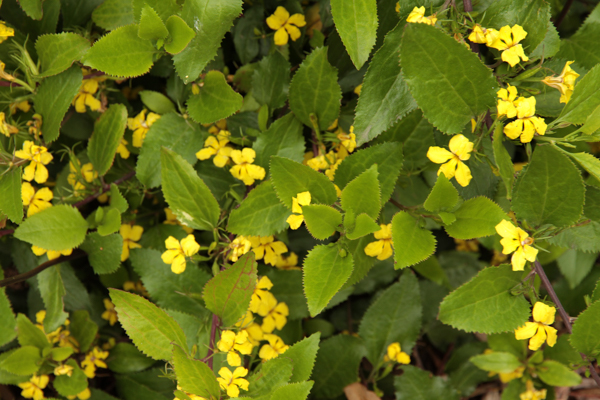
Huge thanks to the Citywide organisation for helping rescue an indigenous-plant project in Port Melbourne’s Lagoon Reserve.
Plans for an annual day of community planting had been cancelled for a second time this year due to Covid restrictions, when Citywide, which manages City of Port Phillip’s parks and open spaces, stepped in to get 1000 plants in the ground.
All the plants came from our own Bili Nursery, which means they are not only locally sourced but also locally appropriate indigenous species.
Monday 16th August saw grasses and tougher species planted next to paths. A diverse selection, including goodenia ovata and kennedia prostrata, infilled on either side of the reserve’s north-eastern Liardet Street entrance.
As warmer and dryer weather arrives, completing the project was particularly timely.
Citywide has undertaken to maintain water for the plants during the establishment phase.

Citywide workers get to work 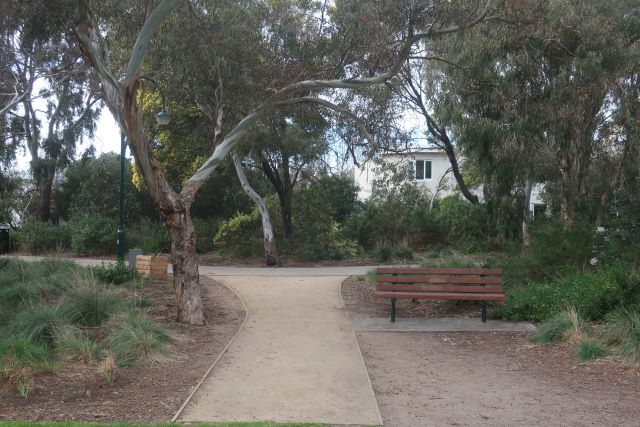
Tough grasses elected for plant edges 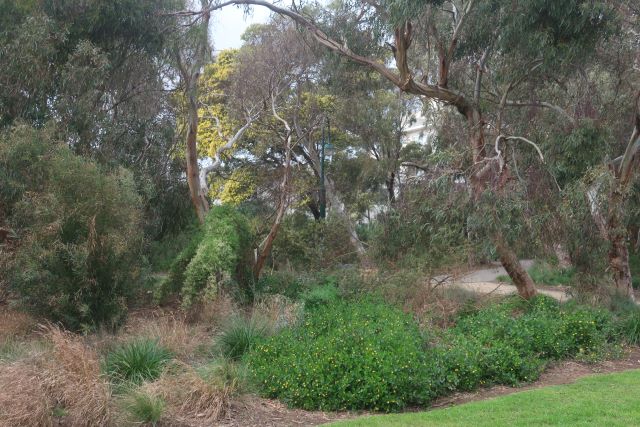
All species planted are indigenous and appropriate to this coastal environment 
Goodenia ovata 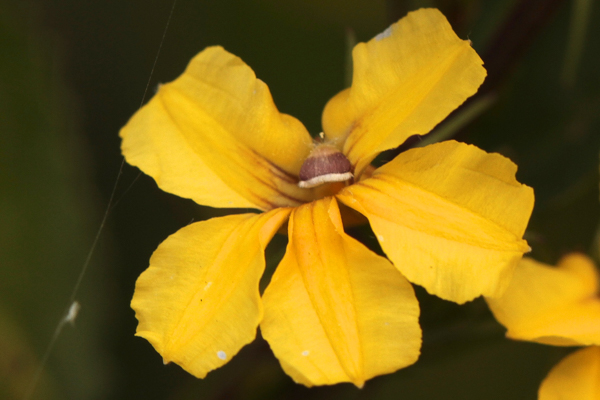
Goodenia ovata 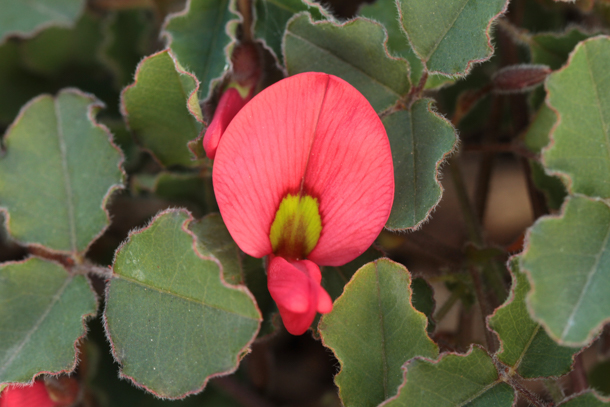
Kennedia prostrata
